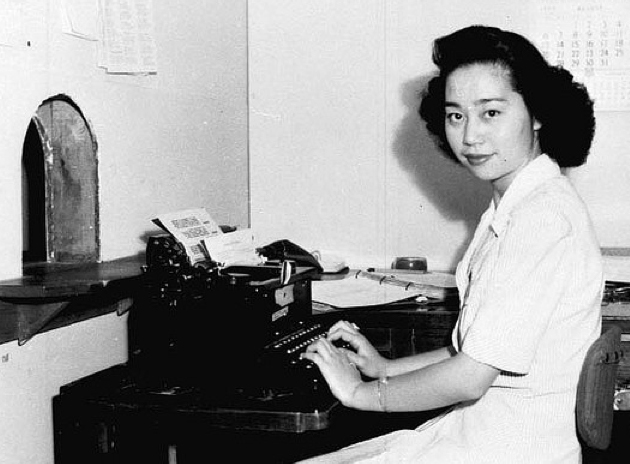

Prior to WWII, she was a clerk with the State of California until the Japanese attack on Pearl Harbor led to her firing, along with all other Japanese American state employees. Mitsuye (Mee-tsoo-eh) Endo was a Nisei native of Sacramento, CA. When the power to detain is derived from the power to protect the war effort against espionage and sabotage, detention which has no relationship to that objective is unauthorized.” - Ex Parte Endo / United States Supreme Court / December 18, 1944 He who is loyal is by definition not a spy or a saboteur. Loyalty is a matter of the heart and mind, not of race, creed, or color. Windy City citizen who is concededly loyal presents no problem of espionage or sabotage.
MITSUYE ENDO TSUTSUMI FULL
You may reminisce in full later, but the glimpse took a half-a-second to recall an entire evening of something that may have happened years ago.
MITSUYE ENDO TSUTSUMI WINDOWS
Scanning, out of the corner of your eye, while driving, the boarded-up windows of a long since closed café and remembering a first date you had there in high school. Ultimately, each piece of history in the Windy City Nikkei feed is a glimpse. How do you get to the thick of it, yet write attractively, when you have to cut 3,000 characters out of a first draft and maybe another 1,000 out of the second? It can be frustrating, but really carves out the essentials, what can and can't go into the story, smaller words for larger meaning, and disposing of the accoutrements. Constantly saving drafts in e-mails for ease of access.

A couple minutes in bed before konking out. Now with multiple Chicagoland locations, Kamehachi remains a 3-generation woman-owned family business, and a testament to the gaman #oldtownchicago #japaneseamerican #eo9066 #resettlement #womanownedbusiness #familybusiness #windycitynikkeiĮven at a 2200 character limit, or perhaps because of a 2200 character limit, stories may take days to weeks to suss out-part-time, of course. In 2008 Marion Konishi was honored by the City of Chicago with an honorary street sign at the corner of Schiller and Wells. Wells, and in 2011 again upgraded to a larger space a block north at 1531 N. Her daughter, Sharon, and granddaughter, Giulia, subsequently took the reins, becoming second & third generation owner-operators. She continued building its reputation as the city’s premier destination for sushi until her passing in 1990 at the age of 74. While other Japanese restaurants in the city had served sushi for decades, the concept of an eatery focused solely on the fare with a specialty chef preparing it in front the guest had not yet been introduced and so was born Chicago’s first sushi bar.Īfter a decade's labor, Marion was able to buy the restaurant from her uncle. Wells, across from The Second City comedy club in the Old Town neighborhood. The 50-year old Marion accepted his invitation and jumped head first into her new career. branch of his Tokyo-based sushi restaurant, Kamehachi. After years of making it happen through secretarial work, in 1967 a Japanese restauranteur uncle approached her about managing a new U.S. Resettled in Chicago by the mid-1940s, an unfortunate divorce left her single with two daughters to feed. Windy City Chicagoans need pay a debt of gratitude to the late Marion Konishi, a pioneer of the city’s sushi scene.Ī California-born Nisei, in 1942 Marion and her husband were forcibly removed from their West Coast home and, without due process, incarcerated at Gila River War Relocation Center in Arizona, one of ten American concentration camps built to imprison some 120,000 persons of Japanese ancestry during WWII.


 0 kommentar(er)
0 kommentar(er)
